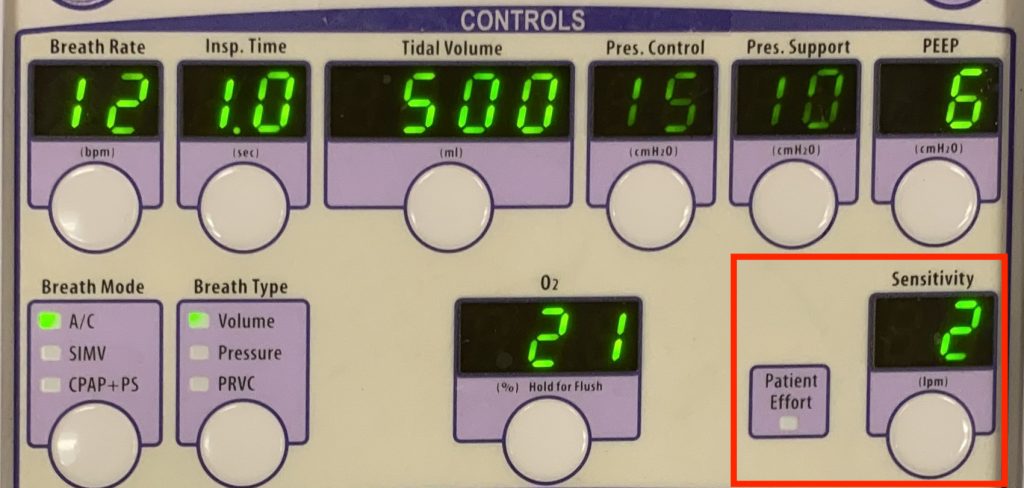Sensitivity
The sensitivity setting determines how easy it is for the patient to trigger a breath. We have two types of triggers that the vent can recognize, depending on the setting. We can have a flow trigger or a pressure trigger.
By default the sensitivity is set to 2 lpm, and can range from 1-4 lpm without making other adjustments (bias flow). At 2 lpm, a flow trigger is looking for the patient to generate 2 lpm of inspiratory flow before the trigger will be recognized. This means that a setting of 4 lpm with be less sensitive and it will be more difficult for the patient to trigger a breath. A setting of 1 lpm will be more sensitive than 2 lpm, and it will be easier for the patient to trigger a breath.
If we turn the sensitivity down past 1 lpm, the setting will turn in a “P”. With a pressure trigger, the ventilator is not looking for inspiratory flow like with a flow trigger. Instead, the vent is looking for a decrease in the patient’s airway pressure. By default, the vent is looking for an airway pressure of 3 cmH2O less than our set PEEP. This default amount can be adjusted in the “Vent Control” menu.
Example. If we have the PEEP set to 7 cmH2O, the patient will have to generate enough negative pressure by inhaling to lower their airway pressure down to at least 4 cmH2O before the vent will recognize the trigger.
One issue that we may run into is excessive movement or road bumps causing inappropriately triggered breaths. If we notice the vent giving breaths when it shouldn’t, especially if we know that the patient is fully sedated, then we may want to consider decreasing the sensitivity by increasing the number.

